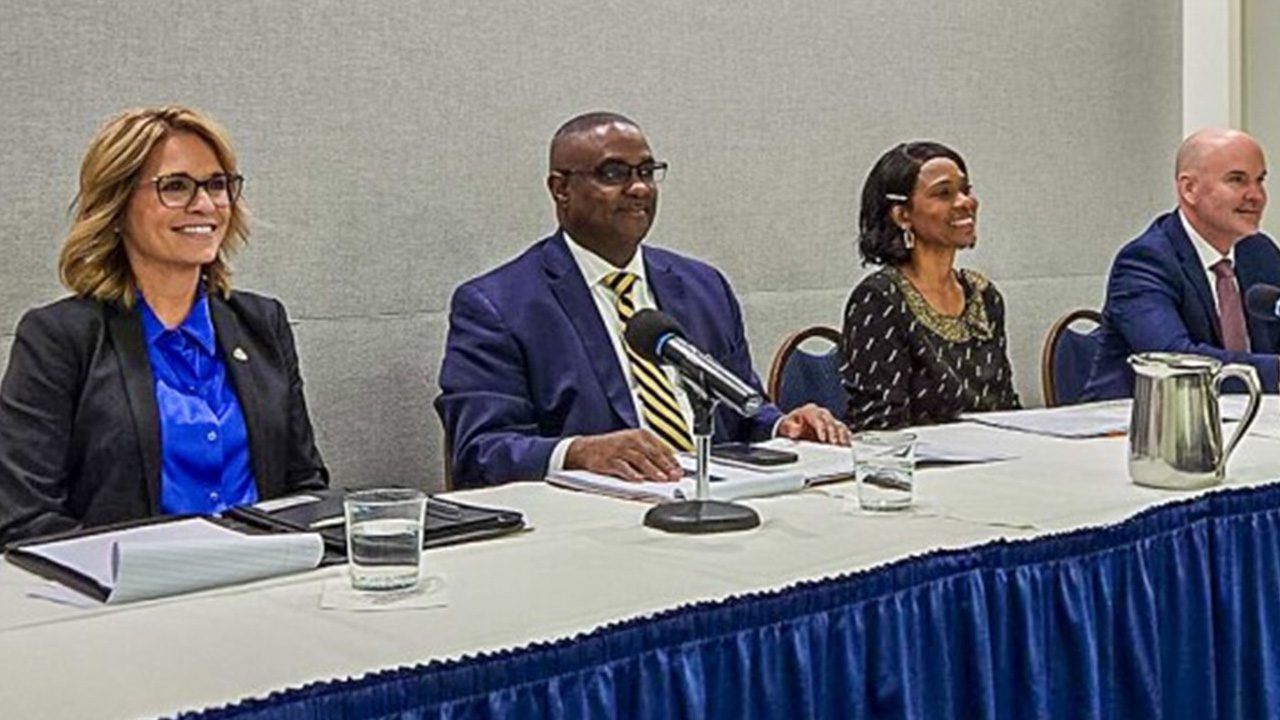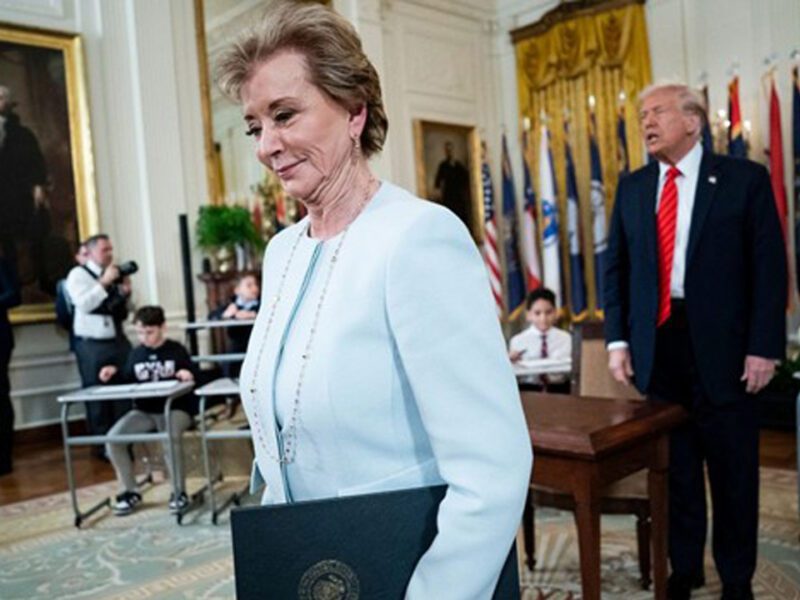
Superintendents Say Public Schools Can Compete With School Choice. Here’s How
Education Week | By Olina Banerji | January 14, 2025
Public schools need better programming, innovation, and funding to compete amid an expansion of school choice, according to the four 2025 finalists for National Superintendent of the Year.
“The fact is that the No. 1 choice for educating all the children in our community is the public education system,” said David Moore, superintendent of the Indian River County school district in Florida, which has some of the most expansive school choice policies in the country. “Why on earth would we allow anyone else to tell our story? In public education, we need to be authors of our own reform.”
Moore, along with the three other superintendents on the panel, are finalists for the National Superintendent of the Year, co-presented by AASA, The School Superintendent’s Association, financial services firm Corebridge Financial, and Sourcewell, a school purchasing solutions provider. The winner will be named at a national conference in New Orleans in early March.
A new federal administration will take charge under Donald Trump on Jan. 20. And the new administration’s proclivity toward channeling tax dollars to school choice programs has been clear.
According to an Education Week analysis, 28 states and the District of Columbia have programs that give parents tax dollars to spend on educational options outside of public schools. The use of vouchers, education savings accounts, and direct tax credits, among other spending options, are likely to grow with support from the Trump administration.
Superintendents, acting as chief executives for their districts, have to “reframe” their thinking and innovate to include more choices within public education, said Debbie Jones, the superintendent of the Bentonville, Ark., school district.
“I don’t have a particular problem with school choice. I have a problem that public schools have been left out of the discussion,” said Walter B. Gonsoulin Jr., the superintendent of Jefferson County schools in Alabama.
A focus on careers can help, superintendents say
Superintendents on the panel were clear that building out their school-to-career pipelines will make public schools a competitive option for students.
To help his district compete for students, Gonsoulin said he’s launched more than 20 high-school-level “academies,” or specialized, certificate-awarding schools.
Students interested in these academies can travel to the high school where they’re located, without having to switch schools. The transportation—buses, with Wi-Fi—is on the district’s tab, said Gonsoulin.
These academies cover several subjects, from agriculture to automotive engineering, and give students a path to a career right after graduation. The superintendent’s team also mapped the job vacancies in their area to offer courses that would help students get high-wage jobs within a 50-mile radius of the district.
With more choices, the number of industry certifications awarded went from 1,000 to 4,000 within the first year of the academies launching, Gonsoulin said.
Jones, from Arkansas, launched a professional studies program in 2016 and had to re-frame her own expectations of what these career-oriented classes would look like. She was anxious about the curriculum standards, and what books or materials would be used.
“We have to unlearn everything we learn about curriculum,” she said. “What we follow is what business and industry calls for that class.”
These classes help students gain certifications, but more crucially, said Jones, they’re able to build networks with the professionals they intern with—for instance, in the health care sector.
The state’s biggest employer, Walmart, has hired over 50 student interns from the district.
This work has to start early
To redesign public school systems to incorporate more choice, Moore said it’s important to remember that current elementary students may go into careers that don’t exist yet. Students will have to develop inherent traits—like curiosity—to keep up with an evolving job market.
“In elementary schools, we’re going to be intentional about students leaving with curiosity and questioning absolutely everything,” he said. “In middle school, we are going to be strategic about making sure they are creative and problem solvers.”
Moore said 78 percent of the district’s most recent graduates had leveraged Advanced Placement classes, dual enrollment and certification programs, and Cambridge certifications.
Moore said his district also dropped certain career programs that didn’t lead to high-paying jobs, and is focusing instead on introducing certifications for nursing, and expanding their welding program.
There are other supportive factors, too, that can help boost students’ interest in coming to school. Staffing schools with qualified and motivated teachers can help, said Sharon Desmoulin-Kherat, the superintendent of the Peoria, Ill., public schools.
Desmoulin-Kherat started her superintendency in 2015 with close to 180 teacher vacancies across the 13,000-student district. The district implemented a grow-your-own program to train and certify a larger and more diverse group of candidates as full-time teachers. Desmoulin-Kherat also pushed for the Peoria district to become a J-1 visa sponsor to hire teachers internationally. Under her leadership, the district has hired 116 teachers from 16 countries to bridge the acute staff shortage.
The four leaders also stressed the importance of communicating with their communities, especially with students from all grades. The conversations, they said, help them peek into students’ goals and aspirations, which start forming as early as kindergarten.





